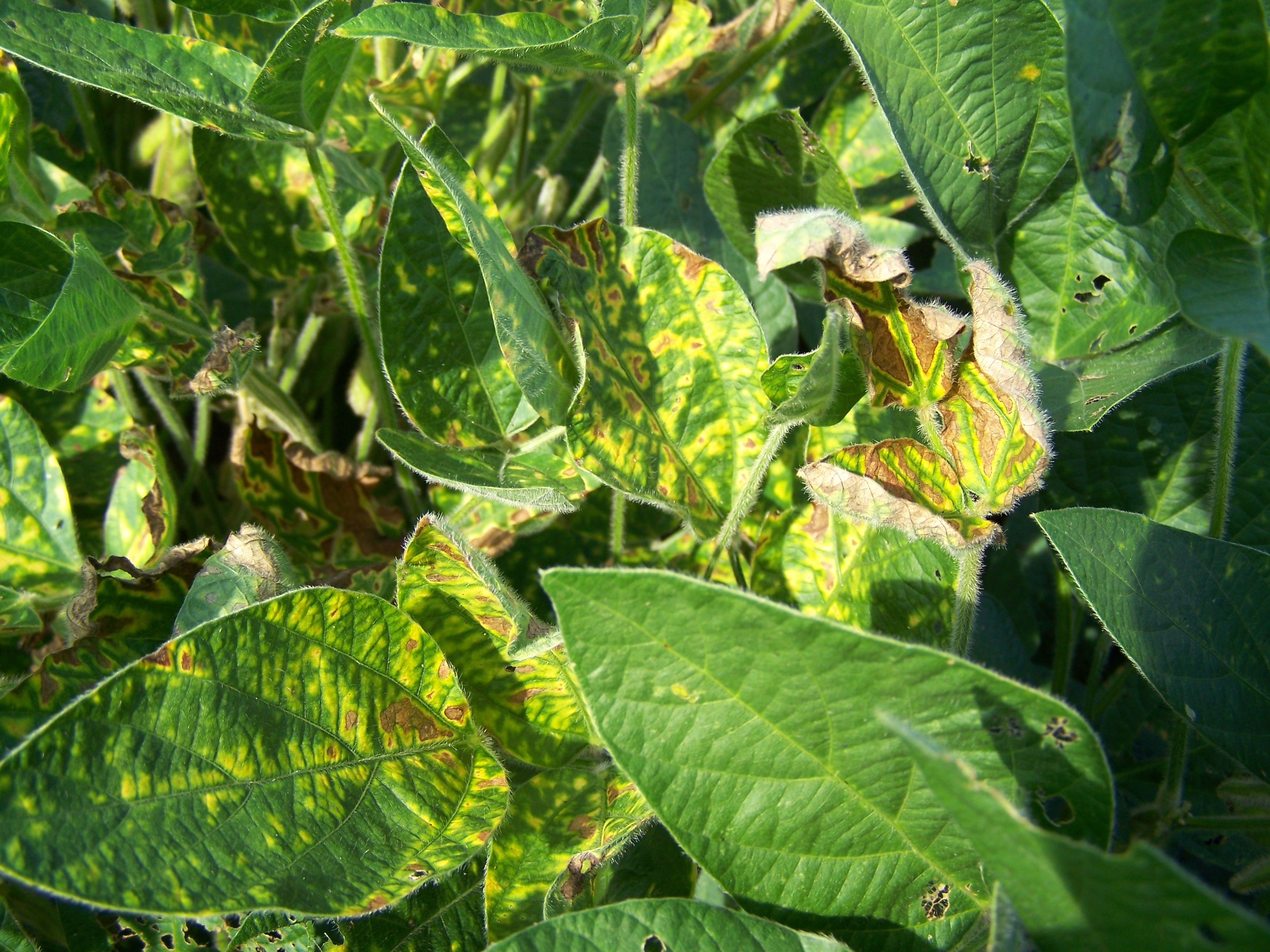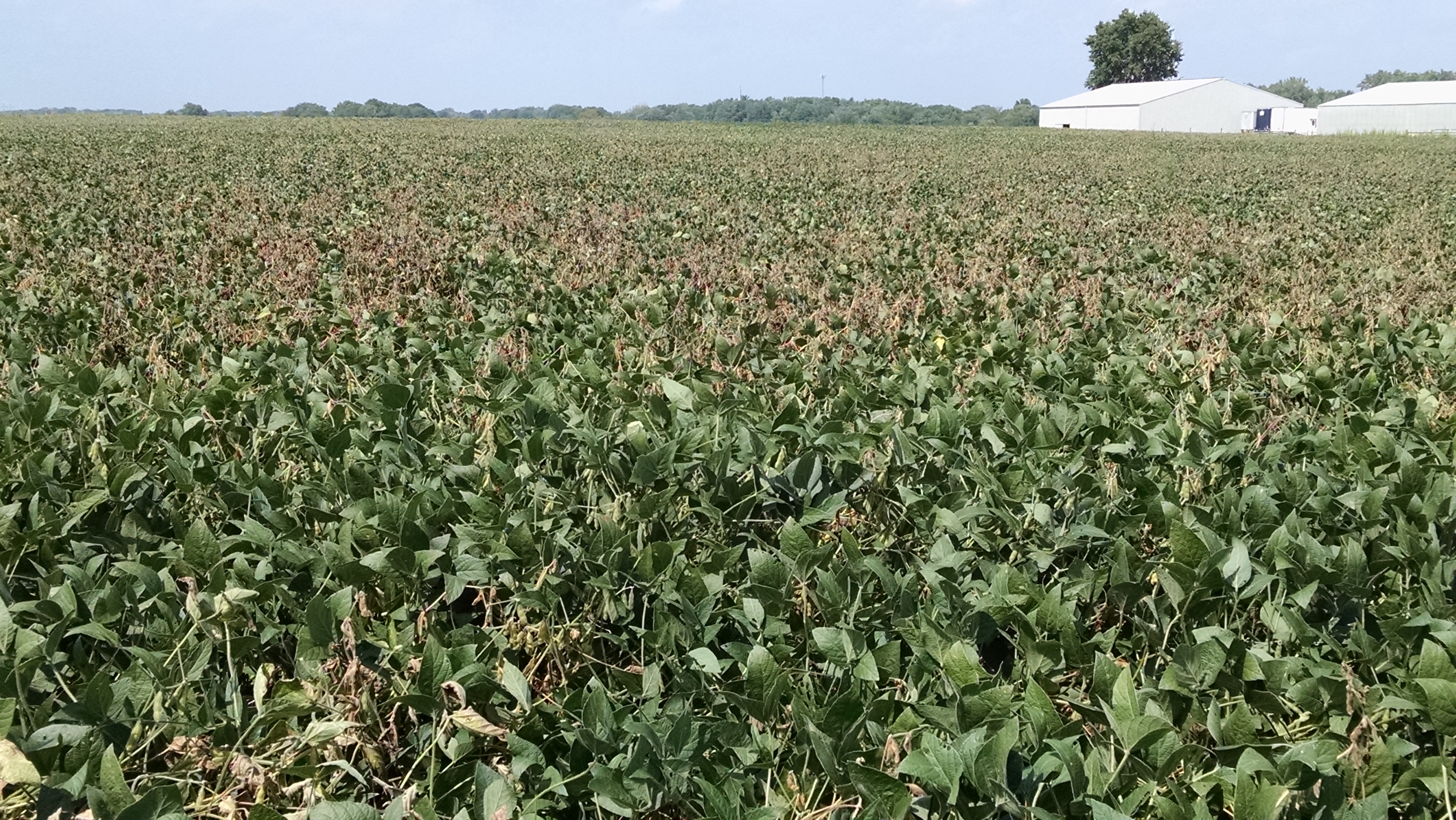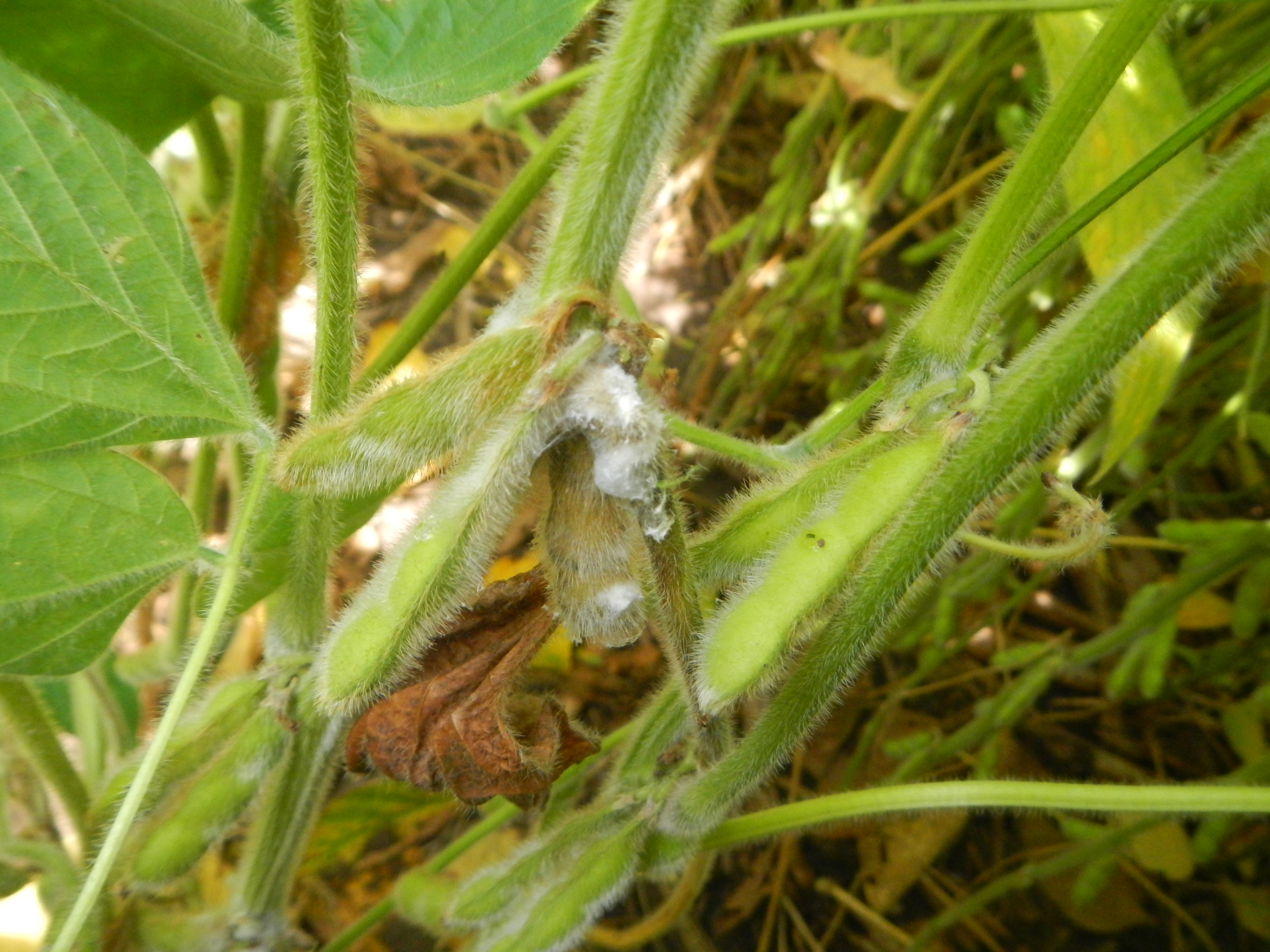Destructive diseases of soybean – sudden death syndrome and white mold – observed in the state
Signs and symptoms of a few soybean diseases have begun to show up in the last few weeks in some areas of the state. Two of these diseases, sudden death syndrome (SDS) and Sclerotinia stem rot (a.k.a. white mold) certainly are going to cause economic losses in some growers’ fields this year.
Symptoms of SDS that currently are being observed are interveinal chlorosis and necrosis of the leaves (veins remain green while the tissues between the veins turn yellow and then brown). These symptoms look exactly like the foliar symptoms caused by a different disease, brown stem rot. Brown stem rot, however, will cause internal browning of the pith in soybean stems, while SDS does not affect soybean stems. On SDS-affected plants, the leaves will fall off eventually, while the petioles will remain attached to the stems and branches. In some cases, a bluish-white mass of spores of the SDS fungus (Fusarium virguliforme) may be observed on the roots. Although the foliar symptoms of SDS are now being observed, infection by the SDS fungus occurred during the seedling stage, not long after planting. The symptoms that are now being observed are the effect of toxins that the SDS pathogen produces that are phytotoxic. Cool and wet weather after planting and the recent rainfall received in parts of the state were favorable for infection and disease development, and are the reasons why SDS incidence is high in some areas this year. The primary method of managing SDS is to choose the most resistant soybean varieties available. Some evidence has shown that high soybean cyst nematode (SCN) egg populations may also increase the likelihood of severe SDS; therefore, managing SCN populations through resistant varieties and crop rotation may also reduce the risk of SDS. Unfortunately, there currently are no fungicide products registered that are effective in managing SDS, but an experimental fungicide seed treatment known as “ILeVO” that is currently making its way through the EPA registration process has shown efficacy against SDS in University of Illinois field trials.


White mold can be observed in fields located in the northern half of Illinois this year. The appearance of this disease also is weather-related. Areas in the northern half of the state, that were cooler and wetter than normal after soybean plants began to flower, are the areas that are affected the most severely. Unfortunately, once white mold signs and symptoms are detected in the field, fungicide applications generally will be futile, as the damage has already been done. Management of white mold was discussed in an earlier article of the Bulletin this year (http://bulletin.ipm.illinois.edu/?p=2412). Growers with severe levels of white mold may encounter some discounts at the elevator this year for high levels of foreign matter. Some sclerotia (dark survival structures produced by the white mold fungus – Sclerotinia sclerotiorum) that are formed on plants may similar in size to the seed, and will make their way to the hopper and eventually the elevator, where discounts may be received.







